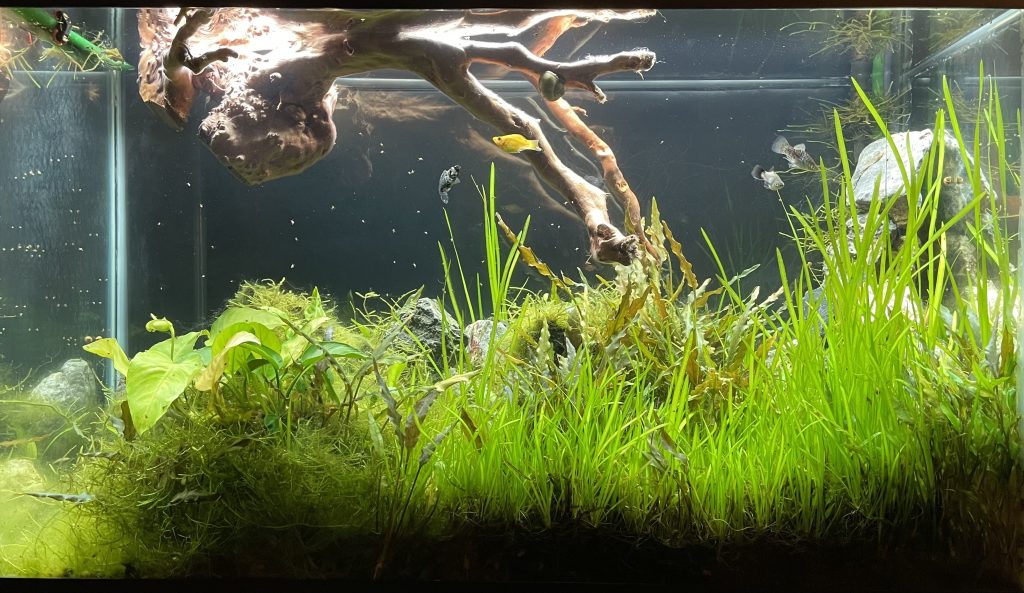
I added a big piece of driftwood. It’ll eventually be propped up in the corner, but for now it’s floating until it becomes waterlogged enough to sink on its own.
–Simon
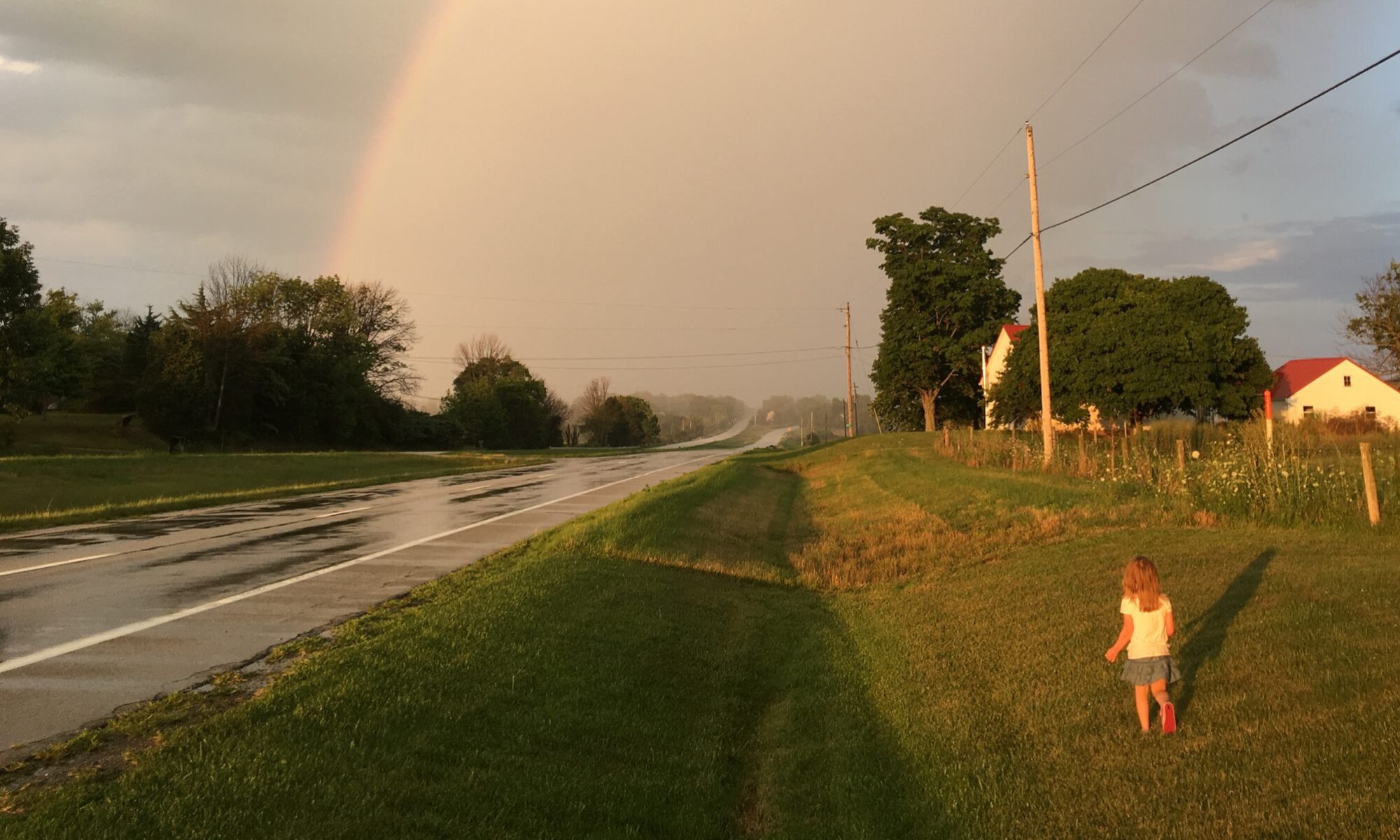
Tales from Easement Acres

I added a big piece of driftwood. It’ll eventually be propped up in the corner, but for now it’s floating until it becomes waterlogged enough to sink on its own.
–Simon
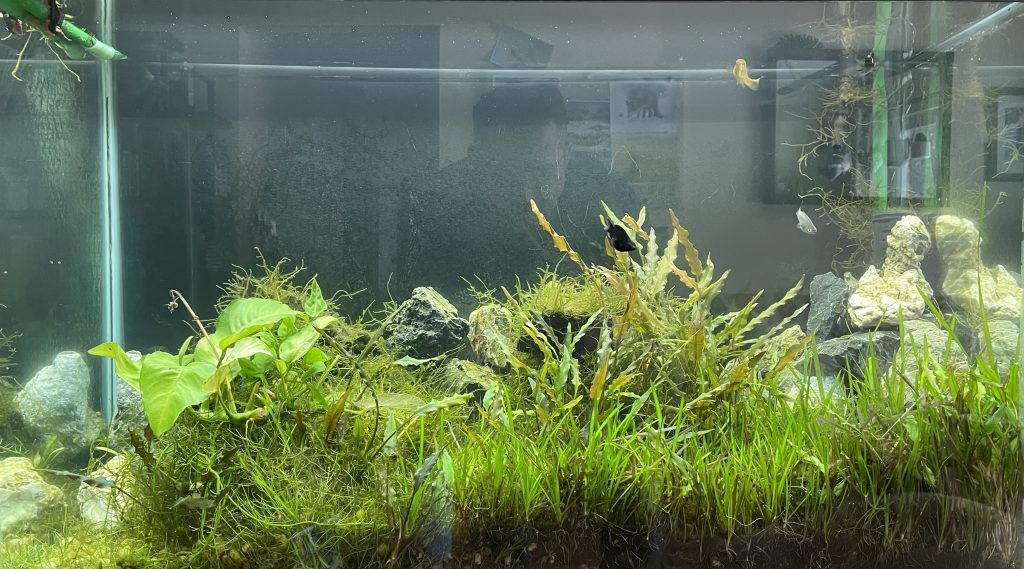
Things are greening up! I definitely won’t be using Excel anymore.
–Simon
Sometime in the 90s I won a goldfish at one of those rigged carnie games at the county fair. What followed is a very common narrative for new fish keepers: I loved the fish, kept it in a bowl on my nightstand, overfed it, and it died within a few days from a lack of proper equipment and my own ignorance. Some years prior the family had made an attempt at a small aquarium, and the results were similar. I find these outcomes odd, considering my father is an environmental scientist with a specialization in decomposition. I would have thought that an intimate understanding of the nitrogen cycle would have armed him with some background on cycling aquariums, but maybe his experience was limited to the terrestrial variety, or more likely – he was just absent-minded and didn’t care about keeping pets.
Despite the initial failure, my interest was piqued, and so began my lifelong involvement in the hobby. In the beginning, it was mostly trial and error, until I acquired some books on the subject (the early days of the internet didn’t have much to offer), and I finally understood how nitrifying bacteria prevented the water column from going toxic – not to mention the limitations on the total bioload tanks of a certain size could maintain. These are lessons that curiosity and experimentation continually forced me to relearn, but what fun is a hobby that doesn’t allow for constant tweaking?
I maintained a 10 gallon tank throughout high school and college, eventually getting a 29 gallon from Liz, which I kept in 4 different apartments and now currently resides in the house. Its size is just big enough to give me options, without being so big that I’d worry about the floor joists (one day I’ll have something huge). It is this tank that I’m documenting here, since it existed in the time of digital cameras and smart phones. So here’s a fun look back in my personal aquarium history of this particular tank:

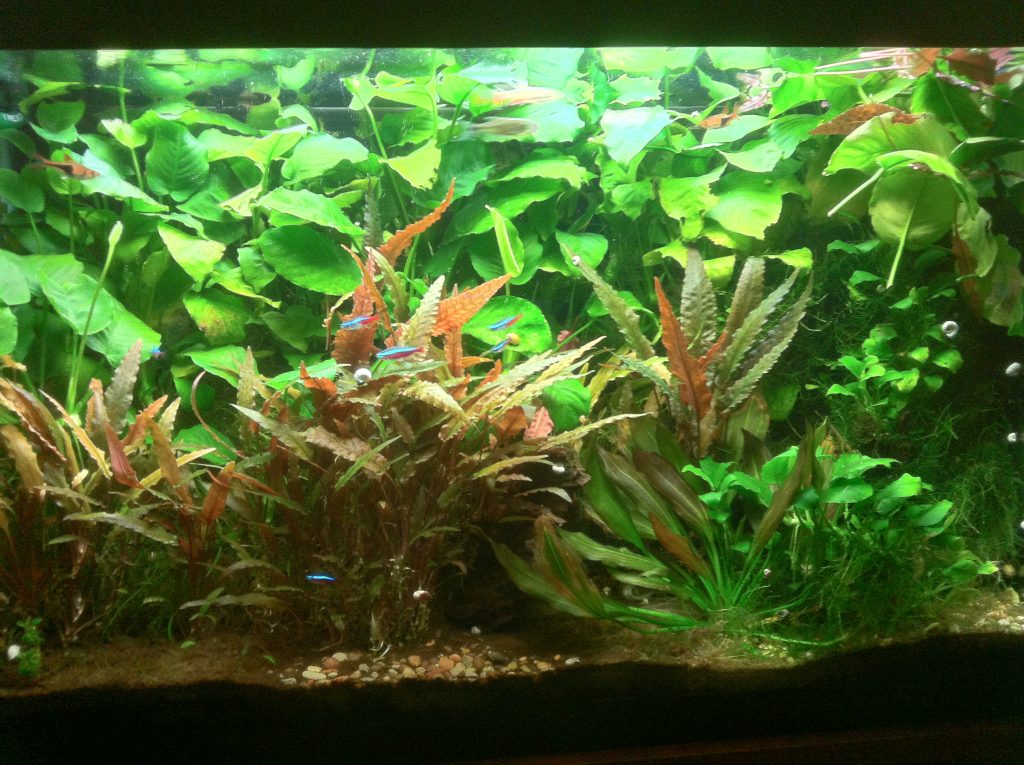
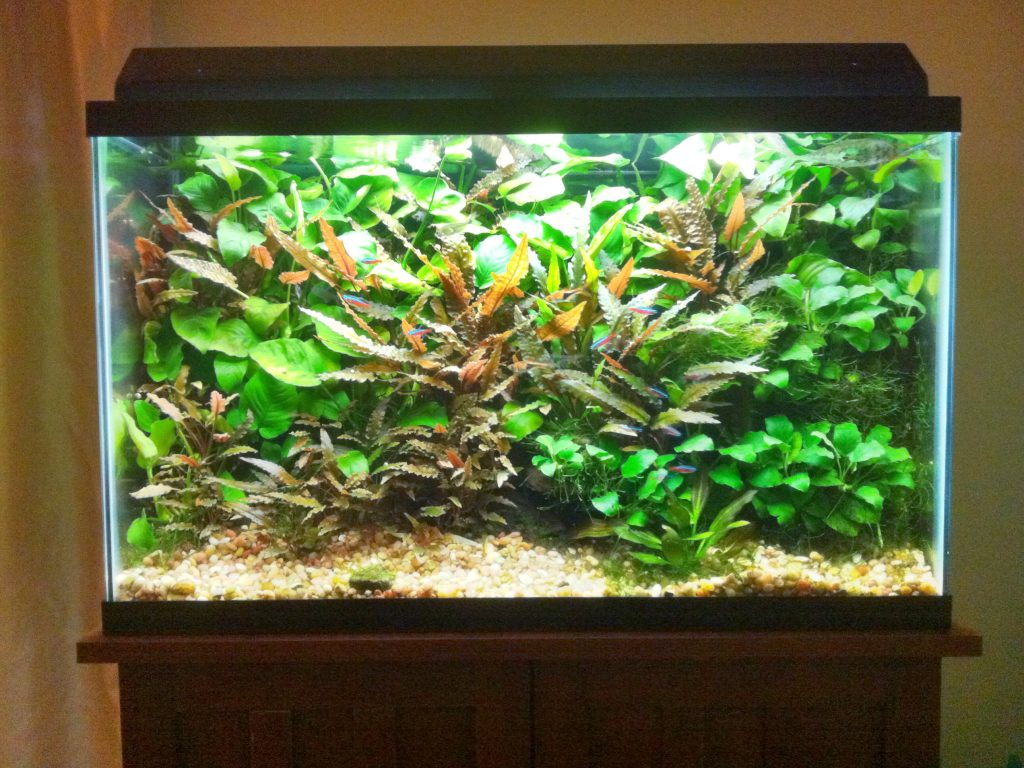
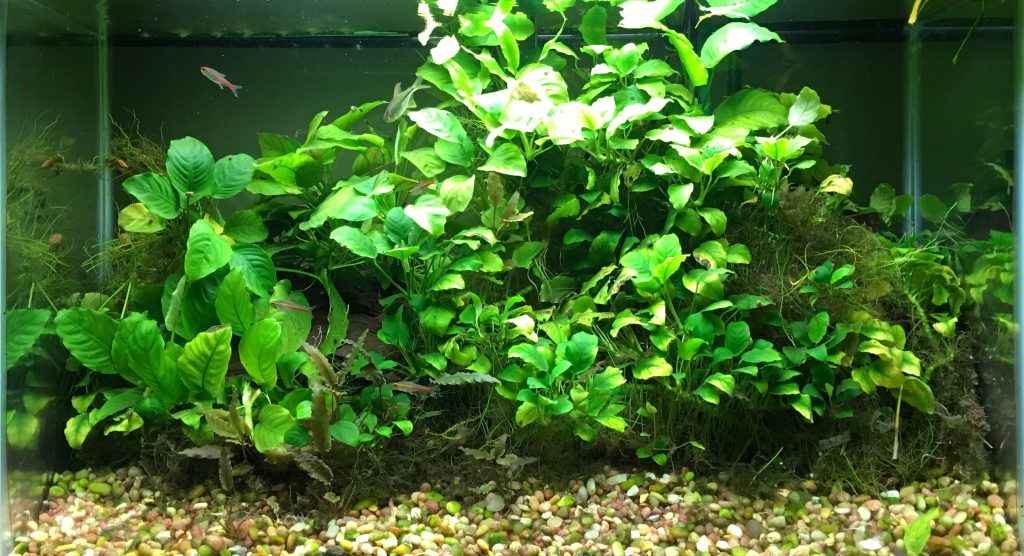
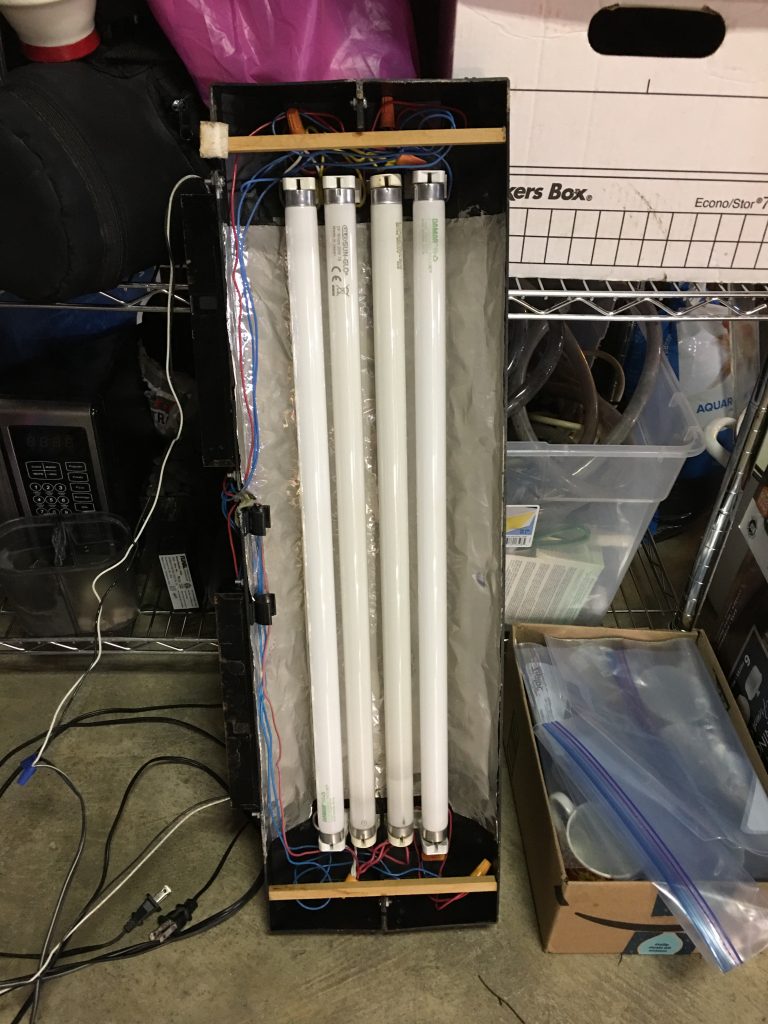
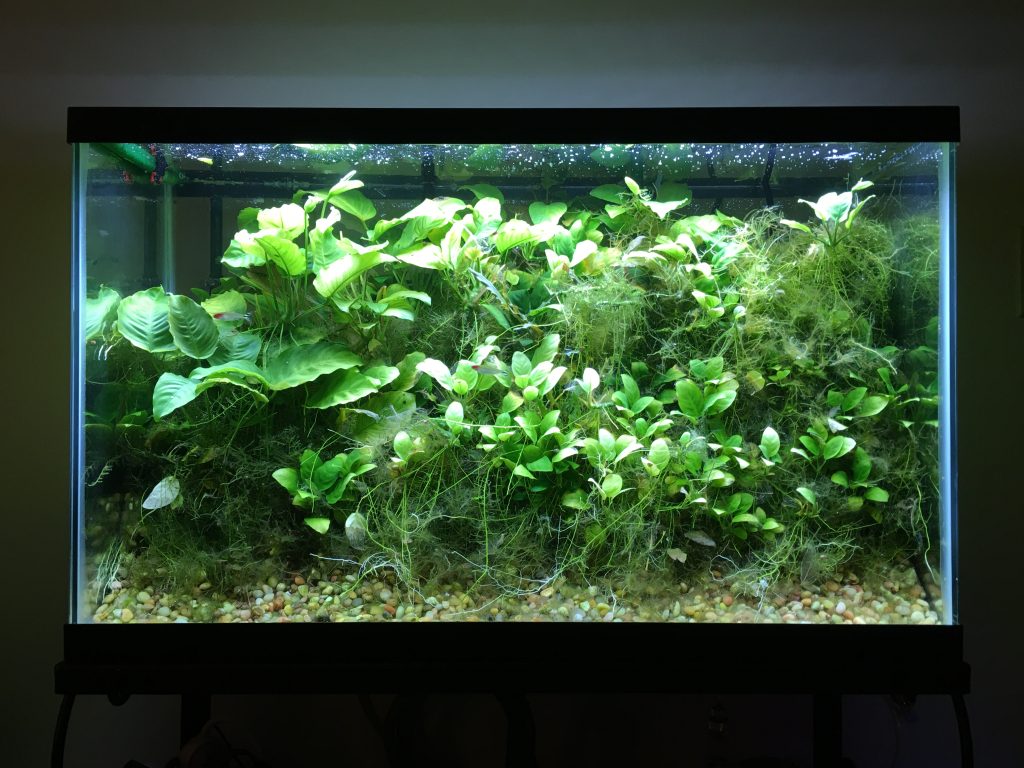
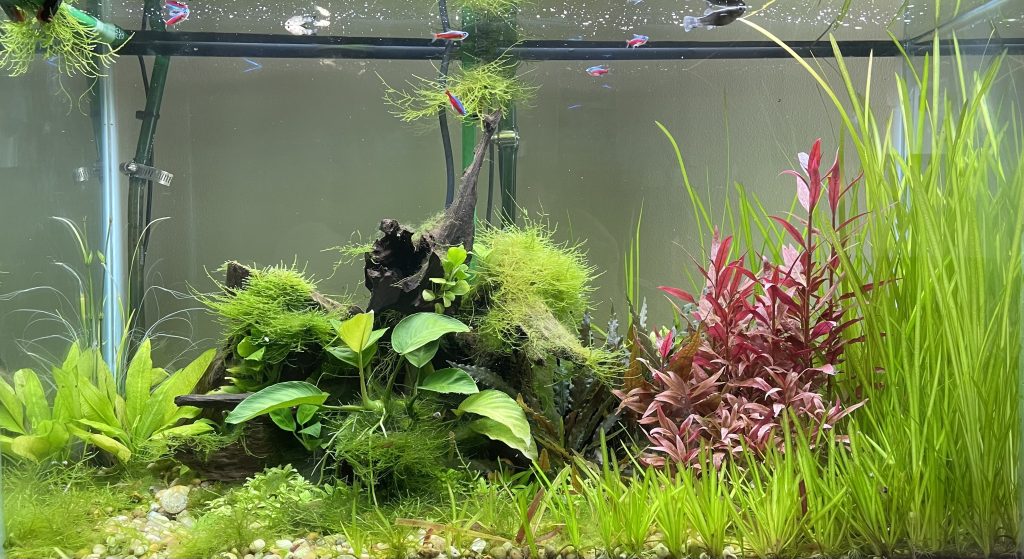
And here’s where things went wrong:
I hadn’t intended to reset the aquarium this year, but events necessitated it. With some lessons learned on caution and chemical dosing, I’m back on track to what will hopefully be once again a pretty tank, this time with mollies!
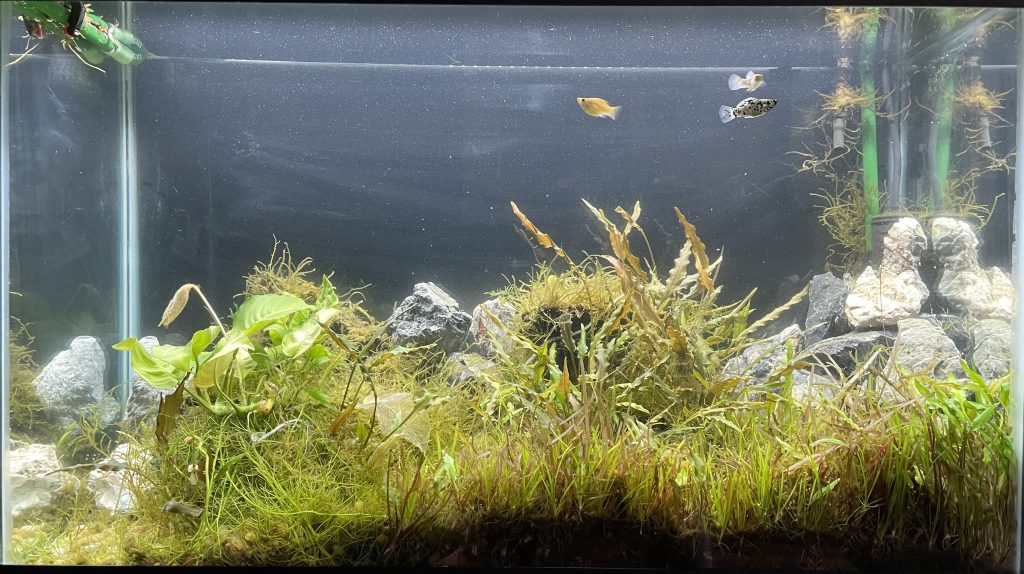
–Simon